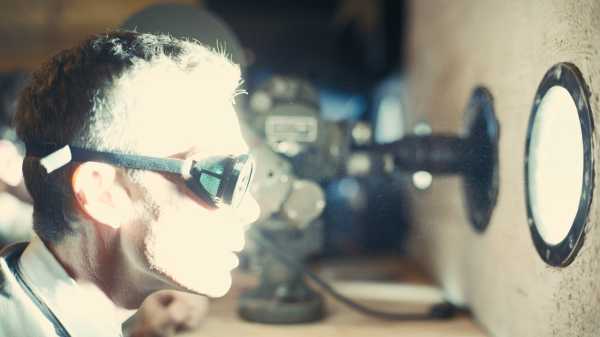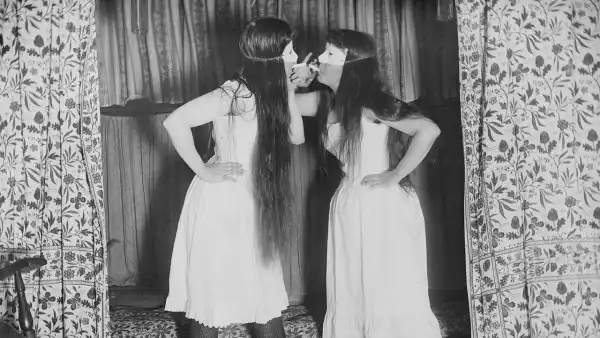
Save this storySave this storySave this storySave this story
The late Daniel Ellsberg, in his book “The Doomsday Machine,” drew attention to a curious conversation that took place between Albert Speer and Adolf Hitler in the summer of 1942, on the subject of atomic apocalypse. Speer had asked Werner Heisenberg, the physicist in charge of the faltering German nuclear program, whether an atomic explosion could lead to an uncontrolled chain reaction. Heisenberg did not rule it out. Speer wrote in his memoir “Inside the Third Reich”:
Hitler was plainly not delighted with the possibility that the earth under his rule might be transformed into a glowing star. Occasionally, however, he joked that the scientists in their unworldly urge to lay bare all the secrets under heaven might someday set the globe on fire. But undoubtedly a good deal of time would pass before that came about, Hitler said; he would certainly not live to see it.
In fact, as Ellsberg pointed out, Hitler killed himself less than three months before the first atomic device was detonated, on July 16, 1945, at what is now the White Sands Missile Range, in New Mexico. The physicists of Los Alamos, led by J. Robert Oppenheimer, had also pondered the prospect of an atmosphere-igniting chain reaction, although they put the chance of such an outcome at less than three in a million. (Enrico Fermi, less sanguine, reportedly placed the odds at 10–1.) Ellsberg noted that these dire discussions were never shared with civilian authorities. It’s unlikely that either Franklin Delano Roosevelt or Harry Truman would have called off the atomic program as a result, yet the withholding of information struck Ellsberg as symptomatic of a moral void. The scientists were “engaged in a longer-term gamble imperiling the survival of humanity.”
Several times in the past eight decades, the world has come shudderingly close to losing that gamble—closest of all during the Cuban missile crisis, when the Air Force general Curtis LeMay urged a strike on Soviet missile positions in Cuba. Richard Rhodes, the author of “The Making of the Atomic Bomb,” wrote in this magazine, in 1995, “If John Kennedy had followed LeMay’s advice, history would have forgotten the Nazis and their terrible Holocaust. Ours would have been the historic omnicide.” To which one can add: if any historians remained. The fact that no nuclear weapon has been used in combat since August 9, 1945, is the result more of pure chance than of accumulated wisdom. Ellsberg concluded tersely, “This is not a species to be trusted with nuclear weapons.”
The test shot that Oppenheimer named Trinity, in an allusion to John Donne’s sonnet “Batter my heart, three-person’d God,” has been reënacted many times onscreen. Christopher Nolan’s “Oppenheimer” is the latest in a series of attempts that go back to the stiff Hollywood docudrama “The Beginning or the End,” released in 1947. Three adaptations appeared in the nineteen-eighties, a time of renascent nuclear alarm: the BBC miniseries “Oppenheimer,” the television movie “Day One,” and Roland Joffé’s film “Fat Man and Little Boy.” But Nolan’s most formidable competition is, perhaps surprisingly, an opera: John Adams and Peter Sellars’s “Doctor Atomic,” which had its first performances in 2005, in San Francisco.
In the months before the “Atomic” première, I chronicled the making of the opera and visited major locales of Manhattan Project history, including the Trinity site. No sulfurous atmosphere lingers at the place: it’s a patch of high desert like any other. If you look down, though, you see a couple of sheared-off metal stubs—all that remains of the hundred-foot tower that held the bomb. The top of each stub is rippled, like whipped cream. I thought back to the early nineteen-eighties, when I was a teen-ager in Washington, D.C. Ronald Reagan was cracking jokes about global thermonuclear war—“We begin bombing in five minutes”—and my classmates and I were discussing what we would do if the sirens began to sound. One friend said, “I’m going to walk toward the Washington Monument and close my eyes.”
How do you stage an event that has left a psychological scar—in some cases, physical scars—on almost everyone on the planet? Mushroom clouds long ago became pop-culture signifiers, detached from the hellish violence that they represent. Stanley Kubrick made them the concussive punch line of “Dr. Strangelove.” In Wes Anderson’s “Asteroid City,” they become one more knickknack of nineteen-fifties décor, alongside Formica countertops and red-and-white checkered tablecloths. What’s impossible to capture is the awe that the sight induced in its first observers, even though most of them had a reasonably good idea of what to expect.
“Oppenheimer,” despite the huge resources that are put into play, presents an oddly rushed, jumbled vision of Trinity. Part of the difficulty is that the Manhattan Project occupies only the middle third of a sprawling bio-pic, one that combines the stylistic incoherence of Oliver Stone (“JFK,” “Nixon”) with the didactic insistence of William Dieterle (“The Story of Louis Pasteur,” “The Life of Emile Zola”). The fraught hours leading up to the explosion—an overnight thunderstorm, bets on the size of the blast, nagging fears of Armageddon—are confined to about eight minutes of screen time. Nolan’s preference for hectic cutting and closeups means that we never fully register the blank immensity of the landscape. The score, by Ludwig Göransson, tries to heighten the tension with insistently driving string textures, which may owe something to Adams’s early minimalist piece “Shaker Loops.” But the sequence is no more suspenseful than dozens of other countdowns in cinematic history, going back to Fritz Lang’s “Woman in the Moon,” from 1929.
“Doctor Atomic,” in contrast, confines itself to the weeks leading up to Trinity, arriving at the eve of the test before the end of the first act. Both the opera and the film include a scene in which Oppenheimer is seen alone at the tower, communing with the tentacled bomb. Cillian Murphy, who plays the physicist in the movie, gazes at it silently, his face wavering between fascination and terror. In “Atomic,” Oppenheimer sings a gravely lamenting aria titled “Batter my heart,” which the baritone Gerald Finley has delivered with matchless intensity in various productions. (Oppenheimer was a voracious reader, and the “Atomic” libretto intermingles documentary material with a selection of his favorite texts.) Opera’s capacity to voice interior monologues has redoubled force as we confront the sheer weirdness of the association: Donne’s poem of divine assault and ravishment renders Trinity as the site of some sort of masochistic ritual.
Oppenheimer’s florid literary self-stylizations are essential to the legendary status that he has acquired. His most grandiose gesture was to claim, years after the fact, that the detonation had put him in mind of the Hindu god Vishnu: “Now I am become Death, the destroyer of worlds.” This loose translation of the Bhagavad Gita is recited twice in “Oppenheimer,” the first time during an inadvertently hilarious sex scene. “Atomic,” wisely, leaves the line out. Mythological allusions have proliferated in tellings of the physicist’s life. In Nolan’s film, he is called an “American Prometheus,” in keeping with the title of Kai Bird and Martin J. Sherwin’s Oppenheimer biography. “Atomic,” for its part, arose in response to San Francisco Opera’s request for a work about an American Faust figure. Such narratives risk personalizing a historical situation that has little to do with one man’s pretentious inner demons. Oppenheimer capably led the building of the bomb, but he did not conceive it, perfect it, or order its use.
“Atomic,” in its final minutes, resolves the Oppenheimer problem by letting him recede into the background. In a nod to Einstein’s theory of relativity, Adams bends time during the countdown so that five minutes are stretched out to almost fifteen. The orchestra sputters and clicks through overlapping, irregular pulses. The music seems at once to accelerate and slow down, devolve into noise and fade to silence. The explosion takes the form of a darkly shimmering chord for massed strings, with a flash of winds and muted brass on top. This, Adams told me in 2005, was the test seen from afar. It evokes what Dorothy McKibbin, the all-knowing gatekeeper of Los Alamos, witnessed from a peak two hundred miles to the north: “The leaves of the green native trees were kind of shining with the gold.” After that false dawn, quiet bell chords toll, and we hear the voice of a Japanese woman begging for water, some of her words taken from John Hersey’s “Hiroshima.” Music’s unparalleled capacity to generate dread leaves a deeper mark than any visual effect could achieve, and the abrupt shift in sonic geography wrenches our anxieties away from the Los Alamos perspective.
In the film, too, Trinity is implicitly transmuted into Hiroshima: at a celebratory gathering at Los Alamos, Oppenheimer hallucinates radiation burns on his colleagues’ faces. Yet Nolan generally pays little heed to the issue of fallout, which Los Alamos doctors tried to raise and which Leslie Groves, the chief of the Manhattan Project, dismissed. “Doctor Atomic” takes note of Groves’s indifference—he asks a physician, “What are you, a Hearst propagandist?”—and Adams’s music depicts radioactive scourings of the body. Sellars, in a revival of the opera in Santa Fe in 2018, heightened the theme by bringing onstage members of the Tularosa Basin Downwinders Consortium, who are seeking compensation for the suffering that fallout inflicted on communities downwind of the blast. The toll of Trinity is difficult to measure, but a steep rise in infant death in New Mexico in 1945 speaks for itself.
Whether any of this work, cinematic or musical, truly honors nuclear victims or contributes to a recognition of American infamy is a matter of debate. Casting the story as the tragic arc of a mythic individual not only obscures the collective nature of the effort but amounts to an exercise in scapegoating. Yet myths can sometimes show us the recurrence of fatal patterns that a more unsentimental approach might overlook. And Faust, who made a contract with the Devil, is surely a better archetype than Prometheus, who stole fire from the gods. Even on a hundred-degree day, Trinity possesses a chilly aura: in that place, a new kind of evil came into the world. ♦
Sourse: newyorker.com






